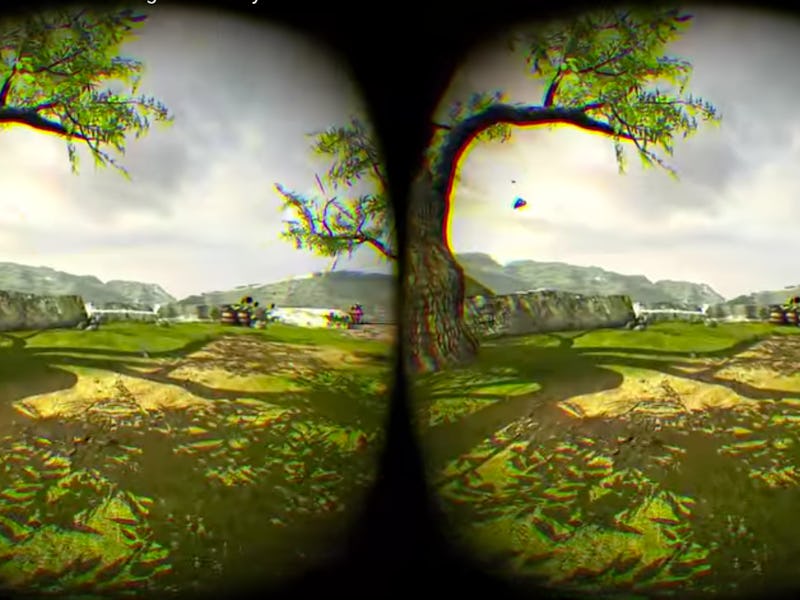The New Cure for Virtual Reality Sickness Is a Catch-22 for Early Adopters
Your body was built to reject poison. But the Oculus Rift isn't actually poisonous.

Virtual Reality has a problem. The whole idea of the technology is that it tricks your brain into really feeling like you are really in a place that you are not. However, the more your brain accepts this trick, the more your body rejects it, sometimes literally, by causing you to vomit all over your expensive new gaming equipment. Yuck.
Fortunately, a group of engineers at Columbia University has found, if not a cure, then an analgesic to treat this sickness. Their idea is to subtly limit the field of view that the VR user sees. It is the virtual equivalent of trying to focus on the road in front of you, and tune out the trees and car whizzing by, except it happens automatically within the technology. By tuning the field of view, a careful balance is struck between allowing the user to feel immersed in the virtual world and causing them to puke on their shoes. The team’s research was recently presented at the 2016 IEEE Symposium on 3D User Interfaces.
The essential problem with VR and nausea is that our body likes to have its sensory input be internally cohesive. If your eyes see your body moving forward through space, but your body feels no acceleration that matches this motion, your brain cannot compute the difference between the two, and you begin to feel increasingly unwell.
Scientists have yet to show exactly why this happens, although one convincing theory is that your brain interprets the sensory mismatch as a hallucination. Over the evolutionary history of humans, this feeling was much more likely to have been caused by ingesting a toxic plant than by driving in a car or putting on an Oculus Rift headset. So, people who responded to hallucinations by vomiting were more likely to survive the poisoning and live on to make babies of their own.
This reaction may have saved countless human lives over history, but it’s an issue for VR, especially since the gaming industry, Facebook, and even journalists are betting that immersive tech is the future of media consumption.
The Columbia team identified a restricted field of view as a potential balm for the physical discomfort of the VR experience. Unfortunately, the more you restrict the field of view, the more the user loses their “sense of presence” — it effectively takes them out of the immersive reality. And that’s not good, since a sense of presence is the entire selling point of virtual reality technologies.
They tackled this problem by making the field of view restriction as subtle as possible. They enclosed the field of view within a circular frame with blurry edges that could dynamically expand or contract as the user navigates the virtual world. If the user is standing still, the field of view would be open wide. Even if the person is looking around a virtual space, the potential for motion sickness in this circumstance is low, since the movements of the user’s head should closely match what they are seeing through the VR device.
However, if they begin to navigate through the virtual world using a controller while their IRL body stays in one place, the potential for VR sickness rises. In response to this motion, the field of view will gradually shrink. The faster the user moves through the virtual world, the smaller their field of view becomes. As they slow and come to a stop, the field of view opens back up.
The researchers tested their tech on 30 users over two days. They found that people felt better, and stayed in the virtual world longer, when their devices were equipped with a dynamic limited field of view. Furthermore, more than half of the participants did not realize their field of view had been constrained. Of those that did, they unanimously agreed that they would prefer to have their field of view limited in future VR experiences.